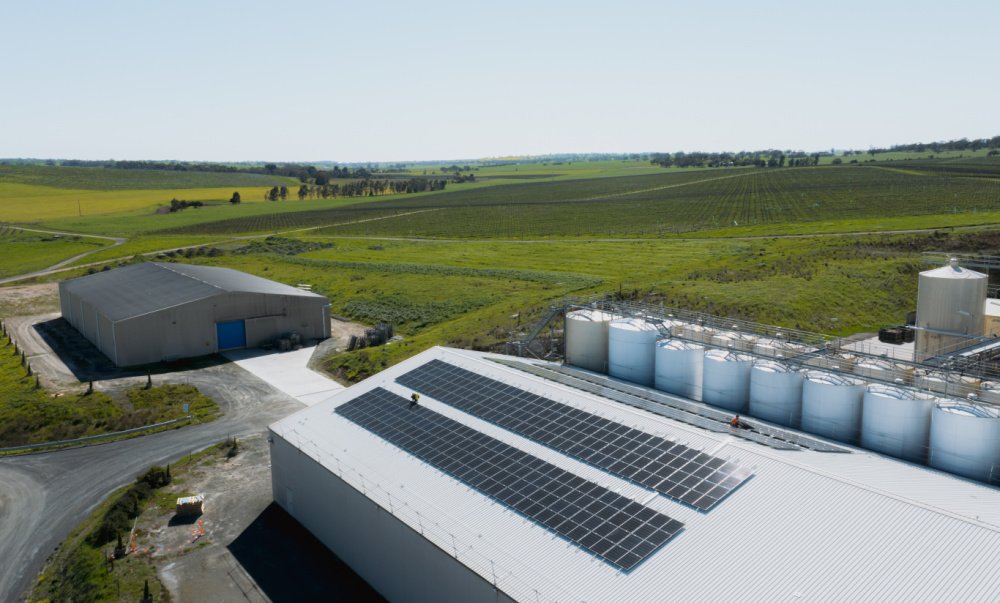Forging ahead on its commitment to climate action, Taylors Wines has achieved two new milestones this week, achieving certification with the newly established Sustainable Winegrowers Australia and installing 270 solar panels at its Clare Valley winery.
“It is crucial that our sector comes together through initiatives like Sustainable Winegrowing Australia to show leadership on climate change. Working on the land, you see the drastic impact climate-related events can have on the wines we make, and without bold action, we as an industry will be faced with even more challenges in the near future. We see these actions as vital steps towards a greener future for our industry and hope it inspires others to take action, too,” said Winemaker & Managing Director Mitchell Taylor.
The solar panels were installed by renewable energy supplier, ZEN Energy, on the roof of the Jaraman cellars. These panels are the first of a number of planned installations, set to generate 136,000 kwh per year, or around 25 per cent of the energy required to run the cellar. They enable Taylors to reduce the winery’s CO2 emissions by 70 tonnes per annum.
Taylors has also committed to procuring 30 per cent of its electricity requirements for its Auburn site from certified Greenpower, further reducing the winery’s carbon footprint by an additional ~266 tonnes per annum.
“The sun is one of our most plentiful resources in the Clare Valley, and one that helps Australia produce such flavourful wines. Harnessing this powerful resource to generate much needed energy for the winemaking process is essential for us as we set to achieve the ambitious emissions reduction targets we’ve set in line with the Paris Agreement,” third-generation said.
Last year, the family-owned winery committed to achieving a 50 per cent reduction in its scope 1 and scope 2 greenhouse gas emissions by 2030, while also reducing its scope 3, as part of the Science Based Targets initiative. This 2030 target provides a clear pathway for the winery to demonstrate it is on track to becoming net-zero by 2050.
Share the content










